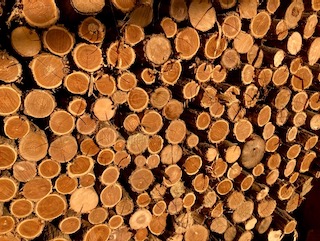With the price of gas and electricity going through the roof, most people are looking at ways to make their home more energy efficient. Tempting as it is to replace everything with alternative energy sources, if you live in an old, stone house like many of us here in France, then generally the most ecological and cost-effective thing to do initially is to gradually improve and hence lessen the costs of each aspect of your energy consumption.
Heating
Heating is one of the major energy costs we have in France so firstly it is worth assessing your current heating system; for example, if you have an old boiler, it can be worth looking into energy efficiency grants to replace it for a new one which are significantly more efficient that they were even five years ago.
Then, look at the form of energy you are using to heat. Here in rural France, it makes most sense to heat with a clean-burning, wood-burning stove. Wood is plentiful, much cheaper than other energy sources and is a renewable energy that can be easily regulated. The most efficient of all the wood burners are ceramic stoves. These work slightly differently to a conventional wood burner as normally only two hours of burning is required and the energy produced in the combustion chamber is stored in the mass of the stove, then released over a 24-hour period. The stove is never shut down on a ‘slow burn’ and is therefore always working at a maximum efficiency of up to 90% hence, in a standard home, a ceramic stove can replace a central heating system on all but the coldest of days. For comparison, an open fireplace, achieves an efficiency of around 10%.
Solar panels
Solar panels and photovoltaic panels have improved and developed hugely in the last 10 years and have become a very cost-effective way to provide electricity and hot water for free once the payback time of installation has been covered (between 10-20 years depending on the number of panels and size of property.) It is also possible to organize a contract with an energy company to sell back any excess electricity to the grid; the amount you earn varies according to the power of your installation and is calculated per kWc, a measure of the amount of electricity produced by photovoltaic panels.
Insulation
Of course, it is a waste of time to heat your house if all the heat is going to disappear straight through the walls and windows to heat the garden. Hence sufficiently insulating your home, especially the roof and the walls, is one of the best ways to reduce energy costs. Wood is one of the best insulators of all, hence the enduring appeal in winter of a cosy, wooden, mountain chalet. Draft proofing old windows or adding double glazing is also an obvious way to prevent heat leaking out but replacing wooden windows with pvc is certainly not ecological. In France, most houses have shutters so closing these overnight provides the original form of insulation. You can also look at secondary glazing and made-to-measure, wooden framed, double-glazed windows.
Recycled Rainwater
Collecting rainwater in water butts is common practice, but sophisticated versions are now available to supply rainwater directly into the house. Rainwater can be used to water gardens and wash cars, and in washing machines and toilets. Used in this way it can save up to 50% of household water use.
Siting and Orientation
Most old houses in rural France were built with the heat and cold in mind. The majority are south facing with thick walls and few windows or openings on the north side, and many are also sheltered from the west to protect from the prevailing wind direction. If you are planning to build from scratch in France, it pays to site the house so that it faces south in order to maximise passive solar gain and hence energy savings. The south side should be up to 60% window, while the north facing side should be more enclosed with minimal glazed openings. Heat loss can be further reduced by setting the house back into a slope so that the earth acts as a ‘thermal store’; slowly absorbing heat during the summer and releasing it to the building as the weather turns cooler.
Luckily, in this part of France, winters are short and we have plenty of sunshine so, while mornings and evenings can be chilly, the temperature often gets up to 20 degrees by the middle of the day even in January and February. And old stone houses with thick walls were designed to keep in the heat in winter and keep out the heat in summer so, already, your French house is halfway to being more energy efficient than most new builds.
If you need help finding your French house, please get in touch: nadia@foothillsoffrance.com






You must be logged in to post a comment.